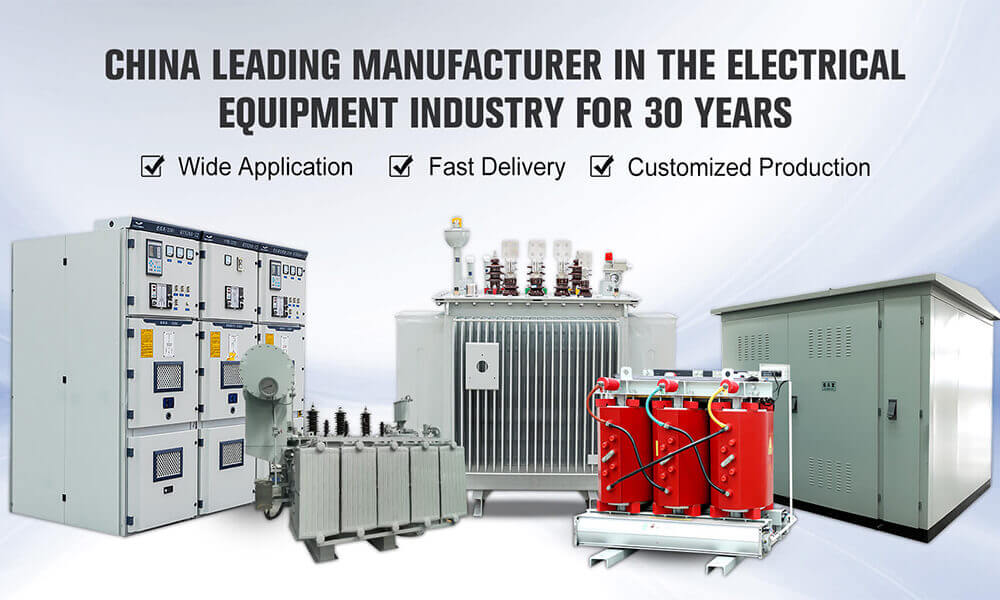Data Center Power Distribution System Solution
The power supply and distribution system of a data center project is a complete link of all power links from the "mains power line" to the "IT equipment plug". The core goal is high reliability, uninterrupted and redundant. Specifically, it includes the following eight categories of equipment
1. High-voltage Transformer and Distribution System
High-voltage switchgear (medium-voltage switchgear): Incoming and outgoing lines, metering, and relay protection, typically 10 kV. Dry-type/oil-immersed transformers: Step down 6–35 kV mains voltage to 400 V. High-voltage busbars: High-current, high-reliability trunk transmission channels. Solid-state transformers (SSTs) are used in some scenarios.

2. Backup Power System Diesel generator sets:
Start and operate in seconds during utility power outages, with a 400 V or 10 kV output. | Oil storage tanks and utility fuel tanks: Ensure full-load operation of the diesel generator for 8–24 hours, with fire protection and fuel supply systems.
3. Automatic Transfer and Distribution Equipment ATSE (Automatic Transfer Switch):
millisecond-level switching between mains and diesel generators. Available in PC and CB levels. Low-Voltage Switchgear (MLVS) :400 V main power distribution, including incoming lines, busbar couplers, feeders, and capacitor compensation. Bus ducts/busbar bridges:distribute low voltage and high current, reducing cabling and improving maintainability.

4. Uninterruptible Power Supply (UPS/HVDC)
The UPS host is a double-conversion online type, including rectification, inverter, static bypass, and maintenance bypass. The HVDC high-voltage direct current (HVDC) system provides 240 V direct current with an efficiency of up to 97.5%, gradually replacing some UPS systems. The battery pack is lead-acid or lithium-ion, with a backup time of 10–30 minutes. It can be located in a separate battery room or battery cabinet.
5. Precision Power Distribution
UPS Input/Output Distribution Cabinet:Provides dual-path input and output distribution for the UPS, including lightning protection and monitoring. The Precision Power Distribution Cabinet (PDC) is located at the end of the cabinet row, providing power to the PDUs based on A/B paths and monitoring power consumption. The PDU (Rack Power Distribution Unit) provides end-of-rack power distribution, supporting C13/C19, smart metering, and remote on/off.
6. Monitoring and Management System
DCIM/Dynamic Environment Monitoring provides real-time monitoring of power consumption, voltage, current, temperature and humidity, battery internal resistance, and other information. Smart meters and power meters are installed in low-voltage cabinets, power distribution cabinets, and PDUs for itemized energy consumption measurement.
7. Lightning Protection and Grounding
Class I, II, and III surge protective devices (SPDs) prevent induced lightning and switching overvoltages from entering along the lines. Joint grounding grid: Substations, UPSs, cabinets, cable trays, etc., with a unified grounding of ≤1 Ω.
8. Prefabricated/Modular Solution (Optional)
Prefabricated power modules: Factory-integrated transformer + low-voltage cabinet + UPS + battery + busbar, ready for on-site plug-and-play deployment. Summary: 10 kV utility power → high-voltage cabinet → transformer → low-voltage cabinet → ATS/diesel generator → UPS/HVDC → front-end cabinet → PDU → server Note: Class A or T4 data centers generally use a 2N architecture (two independent links), ensuring that any single failure does not impact the IT load.

